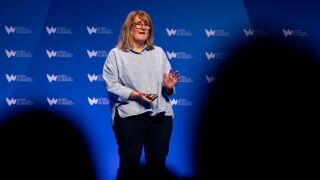With the 2012 European football championships fast approaching, UEFA, Europe’s football governing body has signed a deal with Interoute to host its applications and services and provide a robust network infrastructure.
UEFA said it expects more than 400 million users to visit its website during next year’s tournament, an increase of 46% to the figures released for the last tournament held in 2008. The partnership with Interoute will see the company’s pan-European cloud service support UEFA’s business, football tournaments and events over the next three years.
With video streaming reaching high levels of uptake on numerous platforms, UEFA’s website is sure to experience high levels of coverage for video and image download during the tournament. Its present core IT platform is the Football Administration and Management Environment, which is used to accommodate media bookings, accreditations, competition management and other services.
“Interoute has successfully designed, built and deployed a platform that delivers enterprise grade stability and reliability as well as event driven scalability,” said Daniel Marion, head of information and communications technology at UEFA. “UEFA.com is one of the top 10 most visited sites in the world during major football events providing high quality match coverage to football fans around the world. In Interoute we have found a partner who can match the high levels of performance and quality that UEFA and its competitions stand for.”
Gareth Williams, CEO at Interoute believes the deal is “a huge endorsement of the quality of Interoute’s organisation, infrastructure and technical expertise”. He continued: “With the public-facing IT behind Europe’s most prestigious football being hosted in Europe’s largest private cloud, fans can expect a great experience from every click as well as every match.”
2012 marks a big year for sport in Europe. As London continues its preparations for the 2012 Olympics, Mayor Boris Johnson has expressed his concerns about the strain mobile networks will face during the event, as the amount of data transferred between spectators is expected to increase significantly.
At an event based on promoting business opportunities during the Olympics, the Mayor told reporters there was a lot of work being done to make sure networks and end users have coverage when they are in the vicinity of Olympic events but still expressed caution. “We have got to be realistic, and in the 100 metres final or whatever it happens to be, people will want to download huge quantities all over the world, they will want to be sending huge quantities of data and this will place massive strain on the network.”
Johnson said the need for planning permission to install masts or mobile phone towers was holding up installation in areas including the Olympic Park in east London, but remained confident the infrastructure would be in place by the time the Games began.
“We are working with mobile phone companies to make sure we have enough physical infrastructure and enough coverage for the huge demands there is going to be on communications,” he added.
Smartphones pose an increasingly complex challenge for operators during large sporting events, and Daryl Schoolar, principal analyst at analyst firm Ovum, warns of further strain being placed on networks in the future: “AT&T handled last year’s Super Bowl and the company reported that it was the first time it had seen more traffic uploaded rather than downloaded. Spectators now have smartphones with video cameras, which they use to take movies or clips of the action and upload them for friends who aren’t there. This puts a huge strain on the networks,” he said.
Schoolar believes there “isn’t one single solution” for operators looking to increase coverage of networks to support large scale supporting events. Instead he believes a combination of Wifi solutions and the distribution of antenna systems could help combat network strain. He adds, however, that the industry may not yet have enough confidence to deploy small cell solutions which have only started to emerge on the market.
“Spectrum is a shared resource and so if you have just one big base station blasting down upon a single area, everyone there will be sharing the same amount of spectrum,” said Schoolar.
“If you bring antennas closer to the user, you start parting up the spectrum more – instead of having one large one blasting everything. This ultimately increases capacity.”




